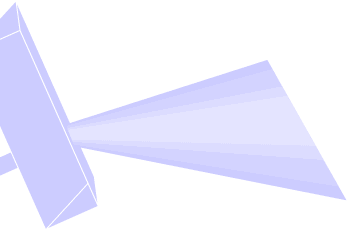How Much School Time Is Devoted to Science Instruction?
Exhibit
6.4 presents information about the amount of instruction in the
sciences given to eighth-grade students in the TIMSS 1999 Benchmarking
jurisdictions and the comparison countries. Since different systems
have school years of different lengths (see Exhibit
R3.6) and different arrangements of weekly and daily
instruction, the information is given in terms of the average number
of hours of science instruction over the school year as reported by
science teachers.
Across countries where science is taught as a single subject, the
average yearly instructional time for science was 122 hours, representing
12 percent of the total instructional time for all subjects. In general,
students in countries with separate science subjects had more total
instructional hours in the sciences, with over 220 hours in the Russian
Federation and the Czech Republic, for example. Since these students
study all of the subjects offered, the total time is the sum of the
hours reported by each subject area teacher. In the United States,
the average instructional time in science for eighth-grade students
was 144 hours. Benchmarking entities that reported more than 160 hours
were North and South Carolina, the Michigan Invitational Group, the
Fremont/Lincoln/Westside Public Schools, Missouri, and the Academy
School District. Entities reporting 120 hours or less were the Naperville
School District, the Southwest Pennsylvania Math and Science Collaborative,
and the Jersey City Public Schools.
Among the comparison general-science countries, the percentage of
instructional time at the eighth grade devoted to the sciences ranged
from 19 percent in England to six percent in Italy. In comparison,
it ranged from 18 percent in the Michigan Invitational Group to 12
percent in five districts and consortia. Among the selected separate-science
countries, the percentage was as high as 24 percent in the Czech Republic
and 26 percent in the Russian Federation.
As shown in Exhibit
6.5, teachers of about 60 percent of the students in
the single-science countries, on average internationally, reported
that science classes meet for at least two hours per week but fewer
than three and a half hours. For another 17 percent, classes meet
for at least three and a half hours but fewer than five On average,
eighth graders in the United States spend more time in science class
per week (61 percent spend three and a half to five hours) than do
their counterparts in other general-science countries. This pattern
of mostly three and a half to five hours held for nearly all of the
Benchmarking entities, with the exception of North Carolina (primarily
five hours or more), the Chicago and Jersey City Public Schools, and
Naperville (the latter three primarily two to three and a half hours).
The data, however, reveal no clear pattern between the number of
in-class instructional hours and science achievement either across
or within participating entities. Common sense and research both support
the idea that time on task is an important contributor to achievement,
yet this time can be spent more or less efficiently. Time alone is
not enough; it needs to be spent on high-quality science instruction.
Devoting extensive class time to remedial activities can deprive students
of this. Also, instructional time can be spent out of school in various
tutoring programs; low-performing students may be receiving additional
instruction.
Videotapes of mathematics classes in the United States and Japan
in TIMSS 1995 revealed that outside interruptions like those for announcements
or to conduct administrative tasks can affect the flow of the lesson
and detract from instructional time.(3) As shown
in Exhibit
6.6, on average internationally almost one-quarter
of the students (23 percent) in general-science countries were in
science classes that were interrupted pretty often or almost always,
and 28 percent were in classes that were never interrupted. The percentage
was generally lower in the separate-science countries. In Japan and
Korea, more than 60 percent of students were in science classes that
were never interrupted – compared with only 13 percent in the
United States. In the United States, nearly one-third of the eighth
graders were in science classes that were interrupted pretty often
or almost always. If anything, the teachers in most of the Benchmarking
jurisdictions reported even more interruptions than did teachers in
the US overall. The jurisdictions with 20 percent or more of students
in classrooms that were never interrupted were the First in the World
Consortium, Montgomery County, and Naperville. Conversely, the jurisdictions
with the highest percentages of students in classrooms almost always
interrupted (17 to 20 percent) were the public school systems of Jersey
City, Miami-Dade, and Rochester. Students in science classrooms that
were frequently interrupted had substantially lower achievement than
their counterparts in classrooms with fewer interruptions.


